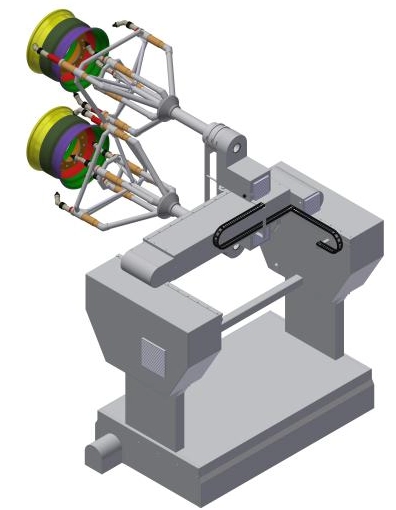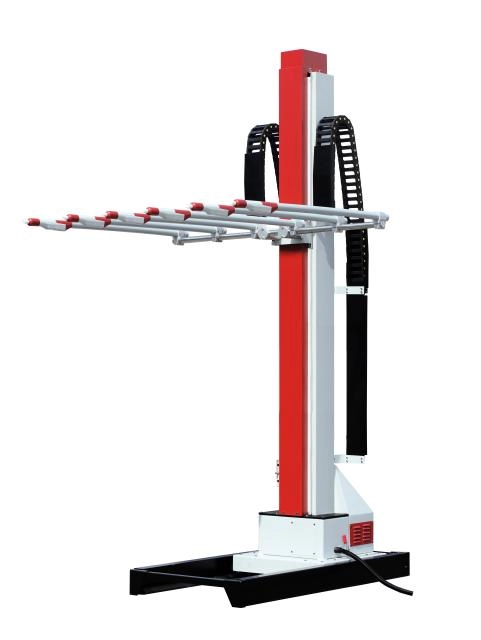Content Menu
● Understanding the basics of electrostatic powder coating
● How manual spray guns operate within a powder line
● Key components and performance factors
● Advantages of manual guns in modern lines
● Challenges and how to mitigate them
● Process integration: from manual touch-ups to automated synergy
● Surface preparation and its impact
● Powder properties and charge stability
● Curing and post-treatment considerations
● Quality control: ensuring consistent results
● Maintenance and optimization strategies
● Environmental and regulatory considerations
● Case studies: practical outcomes from using manual guns
● Training and skill development
● Future trends and innovations
● Practical guidelines for selecting a manual electrostatic spray gun
● Conclusion
● Related questions and answers
Modern manufacturing and finishing environments demand efficiency, consistency, and quality. Powder coating has emerged as a robust, environmentally friendly method for applying durable finishes to a wide range of parts. Within this ecosystem, manual electrostatic spray guns play a pivotal role, bridging the gap between automated lines and adaptable, on-demand coating opportunities. This article explores how manual electrostatic spray guns integrate into contemporary powder coating lines, their operating principles, key performance factors, maintenance considerations, and best practices for achieving high-quality coatings.

Understanding the basics of electrostatic powder coating
Electrostatic powder coating uses an electrostatic charge to attract polymer powder particles to grounded metal substrates. The powder is applied in a dry form and then cured in an oven to form a uniform, durable film. The process offers advantages such as high material utilization, little to no solvent emissions, and excellent corrosion resistance. Manual electrostatic spray guns are handheld devices that deliver charged powder through a nozzle, enabling technicians to coat complex geometries, recessed areas, and irregular shapes that automated systems may struggle to reach.
How manual spray guns operate within a powder line
Manual electrostatic spray guns operate by charging the incoming powder particles and creating an electrostatic field that attracts the particles to the grounded workpiece. The operator's technique, distance, spray pattern, and movement all influence coating uniformity. In modern lines, these guns can serve several roles:
- Spot repair and touch-up on finished parts
- Coating of small batches or parts with unique geometries
- Pre-conditioning or masking operations before automation takes over
- Supplemental coating to automated coats for enhanced thickness control
The versatility of handheld guns makes them valuable for custom finishes, color changes, or repairs without sacrificing line efficiency when used with disciplined processes.
Key components and performance factors
Several elements determine the effectiveness of manual electrostatic spray guns in powder coating:
- Gun design and build quality
- Internal air flow pathways, grounding integrity, and nozzle geometry affect powder charging efficiency and spray consistency.
- Charge mechanism
- Corona or tribo charging methods create surface charges that drive powder toward the substrate. Proper voltage levels and current stability are essential for consistent deposition.
- Powder characteristics
- Particle size distribution, flowability, and moisture content influence charging efficiency and transfer efficiency. Consistent pre-mixing and sieving help maintain performance.
- Grounding and booth conditions
- A solid electrical ground and well-controlled booth airflow minimize back-ionization and stray charging. Ground straps, proper booth cleanliness, and proper filtration support stable operation.
- Operator technique
- Distance control, spray angle, movement speed, and overlap determine film thickness uniformity. Adequate training reduces mottling, orange peel, or runs.
Advantages of manual guns in modern lines
- Flexibility: Ability to coat complex parts or perform spot repairs without altering the automation program.
- Color change efficiency: Quick adjustments between colors without reconfiguring entire automation stations.
- Lower upfront investment for small batches: Ideal for pilot runs or limited production where automation would be cost-prohibitive.
- Maintenance and repair accessibility: Easier to diagnose and service in-field compared to fixed automation components.
Challenges and how to mitigate them
- Uneven coating on recessed features
- Use targeted passes and adjust spray distance and overlap. Consider preheating or pre-warming the part if appropriate for the coating system.
- Overspray and drift
- Optimize booth ventilation, fan speed, and operator position. Use proper spray technique and maintain consistent distance.
- Electrostatic misfires or charge decay
- Check grounding, verify power supply stability, and inspect nozzle integrity. Replace worn components and ensure consistent powder flow.
- Health and safety considerations
- Ensure adequate ventilation, use personal protective equipment, and maintain housekeeping to minimize dust exposure.
Process integration: from manual touch-ups to automated synergy
A well-designed powder line leverages the strengths of both manual and automatic processes. For instance, automated lines can handle high-volume coating of standard parts, while manual guns address exceptions. A typical integration strategy includes:
- Designating touch-up zones near the line's exit for efficient repairs
- Scheduling color-change windows that align with production schedules
- Training operators to perform pre-coat inspections and post-coat checks
- Implementing data logging to monitor coating thickness, bake cycles, and process stability
Surface preparation and its impact
Coating quality begins with substrate preparation. Manual electrostatic spray guns rely on clean, properly prepared surfaces to achieve good adhesion and uniform film formation. Key steps include:
- Degreasing and cleaning to remove oils and contaminants
- Surface pretreatment (e.g., phosphate or chemical conversion coatings) when required
- Preheating or temperature control to reduce coating defects
- Proper masking to protect areas that should not be coated
- Drying and curing conditions that match the powder system specifications
Powder properties and charge stability
Powder characteristics strongly influence deposition efficiency and finish quality. Relevant properties include:
- Flowability: Fine powders may stream poorly or dust in the booth; good flow ensures consistent delivery.
- Moisture content: Excess moisture can lead to clumping and inconsistent charging.
- Particle size distribution: A narrow range improves transfer efficiency and film formation.
- Additives and performance modifiers: Some powders contain additives that improve flow, cure, or corrosion resistance.
Maintaining consistent powder properties requires controlled storage, routine sieving, and supplier quality assurance. When introducing new powders, perform a trial bake and coating assessment before full production.
Curing and post-treatment considerations
After coating, parts must be cured at specific temperatures and times to achieve the intended film properties. Manual coating in a line must align with the curing cycle to avoid defects such as blistering or poor adhesion. Post-treatment steps, like secondary finishing or inspection, may be necessary for certain applications.
Quality control: ensuring consistent results
- Film thickness checks: Use non-destructive gauges to verify thickness across complicated geometries.
- Visual inspection: Look for uniform color, gloss, and absence of runs, sags, or orange peel.
- Adhesion testing: Periodic cross-hatch or tape tests confirm adhesion quality, especially when introducing new coatings or substrates.
- Process monitoring: Track voltage, current, airflow, booth temperature, and humidity to detect drift before it affects coating quality.
- Documentation: Maintain records of powder lots, curing profiles, and batch results for traceability.
Maintenance and optimization strategies
- Regular maintenance schedule
- Clean nozzle and gun internals to prevent powder buildup that reduces charging efficiency.
- Inspect electrical connections and grounding components for wear or looseness.
- Consumables management
- Keep spare nozzles, seals, and gaskets on hand to minimize downtime.
- Calibration and testing
- Periodically verify charge output with test cards or instruments and recalibrate as needed.
- Safety and ergonomics
- Use proper lifting techniques, anti-fatigue mats, and ergonomic tool grips to reduce operator fatigue during long sessions.
Environmental and regulatory considerations
Manual electrostatic spray guns contribute to the overall environmental profile of a coating operation by enabling high transfer efficiency and reducing overspray. Compliance with local environmental regulations, OSHA standards, and industry-specific guidelines is essential. Proper ventilation, dust collection, and maintenance of filtration systems help maintain a safe and compliant workplace.
Case studies: practical outcomes from using manual guns
- Case A: A mid-size manufacturer integrated manual guns to perform color changes between batches without halting production. Result: reduced downtime and improved customization capacity.
- Case B: A small workshop adopted handheld guns for complex parts requiring targeted coating. Result: better surface coverage on hard-to-reach areas and improved customer satisfaction.
- Case C: A line upgrade combined automated coating for standard components with manual touch-ups for fine-tuned thickness control. Result: consistent finish across a mixed production schedule and faster response to design changes.
Training and skill development
Effective use of manual electrostatic spray guns depends on operator competency. Training programs should cover:
- Electrical safety, grounding principles, and personal protective equipment
- Powder handling, storage, and pre-coat inspection
- Spray technique, distance control, overlap, and movement patterns
- Color change procedures, nozzle selection, and maintenance routines
- Quality control protocols and data recording practices
Regular refresher sessions and competency assessments help sustain high performance and reduce defects.
Future trends and innovations
- Smart powder guns
- Integration with sensors and IoT platforms to monitor charge stability, flow, and environmental conditions in real-time.
- Advanced nozzle technology
- Innovations that improve powder dispersion, reduce overspray, and enable finer control over film thickness.
- Robotic-assisted manual support
- Collaborative robots (cobots) assisting operators in maintaining consistent spray patterns and reducing fatigue.
Practical guidelines for selecting a manual electrostatic spray gun
- Define your coating requirements
- Ergonomics, weight, grip design, and trigger options should suit operator comfort for extended use.
- Evaluate charging method and voltage stability
- Ensure compatibility with your powder and substrate, and confirm consistent charge output.
- Consider maintenance and support
- Choose guns with readily available spare parts and a broad service network.
- Assess compatibility with your booth and ventilation
- Ensure the gun's electrical and air supply requirements align with the booth configuration.
- Plan for future needs
- Select versatile models that can adapt to changing colors, coatings, and production volumes.
Conclusion
Manual electrostatic spray guns remain a valuable component of modern powder coating lines. While automation handles high-volume, uniform finishes, handheld guns offer unmatched flexibility for colors, touch-ups, complex geometries, and rapid response to evolving production demands. A well-managed balance between automated processes and skilled manual application can yield superior coating quality, efficient production, and satisfied customers.

Related questions and answers
1) What are the main differences between manual electrostatic spray guns and automatic guns in powder coating?
A: Handheld guns offer greater flexibility and are suitable for color changes, localized touch-ups, and coating complex geometries. Automatic guns are suitable for large-scale, standardized, and uniform coatings, offering higher production efficiency and consistency.
2) How can I improve coating uniformity with a handheld powder spray gun?
A: Maintaining a stable distance and coverage, controlling the spray angle, ensuring good grounding, using an appropriate powder particle distribution, and performing regular maintenance and process parameter adjustments.
3) What are the advantages of a handheld gun for small-batch or custom coating?
A: It allows for quick response to customer needs without reprogramming the entire production line, reducing changeover costs and making it suitable for trial runs and color samples.
4) What are the key parameters that influence handheld spray gun performance?
A: Powder properties (particle size, flowability, moisture content), gun body design, charging method, grounding cable, distance between the gun and the workpiece, and working environment conditions.
5) How can I achieve effective coordination between a handheld gun and an automatic production line? A: Set up touch-up/color change points outside the automated line, conduct training to unify operating procedures, and establish data records to track coating thickness, baking conditions, and process stability.
Hot Tags: China, Global, OEM, private label, manufacturers, factory, suppliers, manufacturing company










































 .
. 